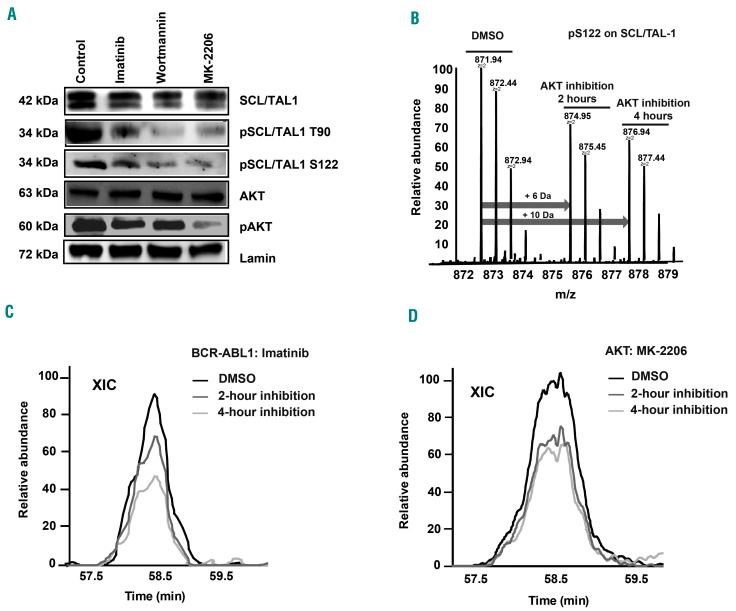Figure 6.
BCR-ABL1 modulates SCL/TAL1-binding to the CD44 regulatory element via pAKT. (A) Immunoblot of lysates of K562 cells treated with vehicle, imatinib (10 mM), the PI3-kinase inhibitor wortmannin (20 mM) or the AKT-inhibitor MK-2206 (20 mM) and probed with antibodies to SCL/TAL1, pSCL/TAL1 T90, pSCL/TAL1S122, AKT, pAKT and lamin. Molecular weights are as indicated. The immunoblot is representative of three independent experiments. (B-D) Quantitative mass spectrometry (MS) of K562 cells treated with vehicle (dimethylsulfoxide, DMSO), imatinib or the AKT inhibitor MK-2206 for 0, 2 or 4 h using triple stable isotope labeling with amino acids in cell culture (SILAC) and light-, medium- or heavy-labeled cells. After treatment, differently labeled cells were mixed and followed by MS analysis. (B) An averaged MS1 spectrum showing the SILAC triplets of the pS122-bearing peptide “oxMVQLpSPPALAAPAAPGR” on SCL/TAL1 in AKT-inhibited cells. The arrows indicate the mass increments resulting from the medium (+6 Da) or heavy (+10 Da) SILAC-labeling on arginine. The relative intensities of the SILAC triplets revealed the changes of phosphorylation level on the peptide during the course of AKT inhibition. (C, D) Areas under the extracted ion chromatogram (XIC) after MS by triple SILAC labeling of the cells in (B) showing the relative abundance of pSCL/TAL1 S122 after inhibition with imatinib (10 mM) (C) and the AKT inhibitor MK-2206 (20 mM) (D).

